
The Triumph slant-four is an inline four-cylinder petrol car engine developed by the Triumph Motor Company. It first appeared in 1968 in a car from Saab. The first Triumph model to use the engine did not appear until 1972. With an original capacity of 1.7 L, displacement grew over time to 2.0 L. Production ended in 1981.

The Ford flathead V8 is a V8 engine of the valve-in-block type designed by the Ford Motor Company and built by Ford and various licensees. During the engine's first decade of production, when overhead-valve engines were rare, it was usually known simply as the Ford V‑8, and the first car model in which it was installed, the Model 18, was often called simply the "Ford V‑8", after its new engine. Although the V8 configuration was not new when the Ford V8 was introduced in 1932, the latter was a market first in the respect that it made an 8-cylinder affordable and a V engine affordable to the emerging mass market consumer for the first time. It was the first independently designed and built V8 engine produced by Ford for mass production, and it ranks as one of the company's most important developments. A fascination with ever-more-powerful engines was perhaps the most salient aspect of the American car and truck market for a half century, from 1923 until 1973. The engine was intended to be used for big passenger cars and trucks; it was installed in such until 1953, making the engine's 21-year production run for the U.S. consumer market longer than the 19-year run of the Ford Model T engine for that market. The engine was on Ward's list of the 10 best engines of the 20th century. It was a staple of hot rodders in the 1950s, and it remains famous in the classic car hobbies even today, despite the huge variety of other popular V8s that followed.

Austin Motor Company's small straight-4 automobile engine, the A series, is one of the most common in the world. Launched in 1951 with the Austin A30, production lasted until 2000 in the Mini. It used a cast-iron block and cylinder head, and a steel crankshaft with 3 main bearings. The camshaft ran in the cylinder block, driven by a single-row chain for most applications, and with tappets sliding in the block, accessible through pressed steel side covers for most applications, and with overhead valves operated through rockers. The cylinder head for the overhead-valve version of the A-series engine was designed by Harry Weslake – a cylinder head specialist famed for his involvement in SS (Jaguar) engines and several F1-title winning engines. Although a 'clean sheet' design the A series owed much to established Austin engine design practise, resembling in general design and overall appearance a scaled-down version of the 1200cc overhead-valve engine first seen in the Austin A40 Devon which would form the basis of the later B-series engine.

The BMC B series was a line of straight-4 internal combustion engine mostly used in motor cars, created by British company Austin Motor Company.

The Bentley 3 Litre was a car chassis manufactured by Bentley. The company's first it was developed from 1919 and made available to customers' coachbuilders from 1921 to 1929. The Bentley was very much larger than the 1368 cc Bugattis that dominated racing at the time, but double the size of engine and strength compensated for the extra weight. The 4000 lb (1800 kg) car won the 24 Hours of Le Mans in 1924, with drivers John Duff and Frank Clement, and again in 1927, this time in Super Sports form, with drivers S. C. H. "Sammy" Davis and Dudley Benjafield. Its weight, size, and speed prompted Ettore Bugatti to call it "the fastest lorry in the world." This was regarded as a compliment and the inbuilt ruggedness of the design has proven this over 100+ years! Built in 3 main variants, Blue label, Red Label Speed models all carrying a 5-year warranty, and the coveted and rare Green Label 100 mph cars, which only carried a 12-month warranty reflecting the high state of tune.
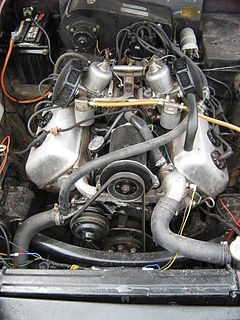
Daimler V-8 engines were designed for the Daimler Company by Edward Turner and produced from 1959 to 1969. Initially used in the SP250 sports car and the Majestic Major saloon, the engine was mostly used in the Daimler 2.5 V8 saloon made with Jaguar Mark 2 unit bodies from 1962 to 1969. Approximately 20,000 of the 2.5-litre version of the engine were made for use in the SP250 and the 250 saloon, while approximately 2,000 of the 4.5-litre version were made for use in the Majestic Major saloon and its limousine variant which remained in production until 1968.
The EA827 family of petrol engines was introduced in 1972 by Audi in the B1-series Audi 80, and went on to power many Volkswagen Group models. This is a very robust water-cooled engine configuration for four- up to eight- cylinders, and is still in production. In Brasil this engine is produced under name Volkswagen AP AP.
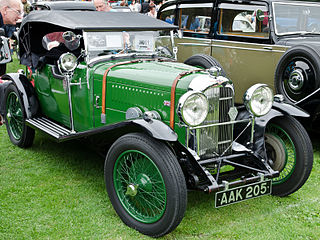
The Lagonda Rapier was a small car produced by the British Lagonda company from 1934 to 1935. A few more were subsequently produced by the independent Rapier Car Company.
The Rolls-Royce Eagle XVI was a British experimental 16 cylinder aero engine designed and developed by Rolls-Royce Limited in 1925. The engine was test run but did not fly, the project, together with the planned larger variant, the Eagle XX, was cancelled in favour of the Rolls-Royce Kestrel, that was being developed concurrently.
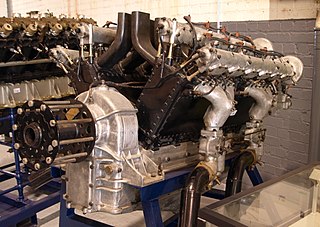
The Sunbeam Cossack was a British 12-cylinder aero engine that was first run in 1916. The Cossack spawned a family of engines from Sunbeam.
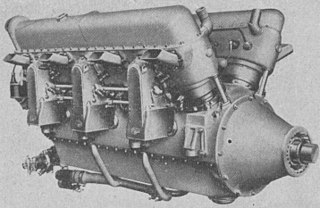
The Lorraine 12H Pétrel was a French V-12 supercharged, geared piston aeroengine initially rated at 370 kW (500 hp), but later developed to give 640 kW (860 hp). It powered a variety of mostly French aircraft in the mid-1930s, several on an experimental basis.
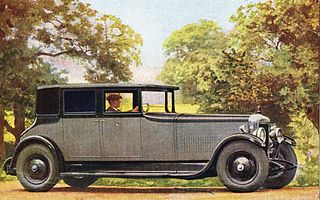
Daimler Double-Six piston engine was a sleeve-valve V12 engine manufactured by The Daimler Company Limited of Coventry, England between 1926 and 1938 in four different sizes for their flagship cars.

The Austin 25-30 is a motor car. It was the first automobile produced by newly established British car manufacturer Austin.
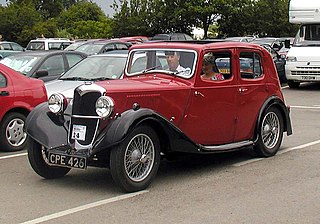
The Riley 12/4, or from 1936 the Riley 1½-litre, is a range of cars made from 1935 to 1938 by the British Riley company available with saloon, touring, and sports/racing coachwork,

The Mercedes-Benz OM 138 is a diesel engine manufactured by Daimler-Benz. In total, 5,719 units were produced between 1935 and 1940. It was the first diesel engine especially developed and made for a passenger car. The first vehicle powered by the OM 138 was the Mercedes-Benz W 138. The light Mercedes-Benz trucks L 1100 and L 1500 as well as the bus O 1500 were also offered with the OM 138 as an alternative to the standard Otto engine.

The Lagonda 14/60 was a sports touring car introduced by Lagonda in 1925. Production of the 14/60 continued until 1931. As well as the standard car there were variants called the 2 Litre Speed (1927–33) and Continental.
















